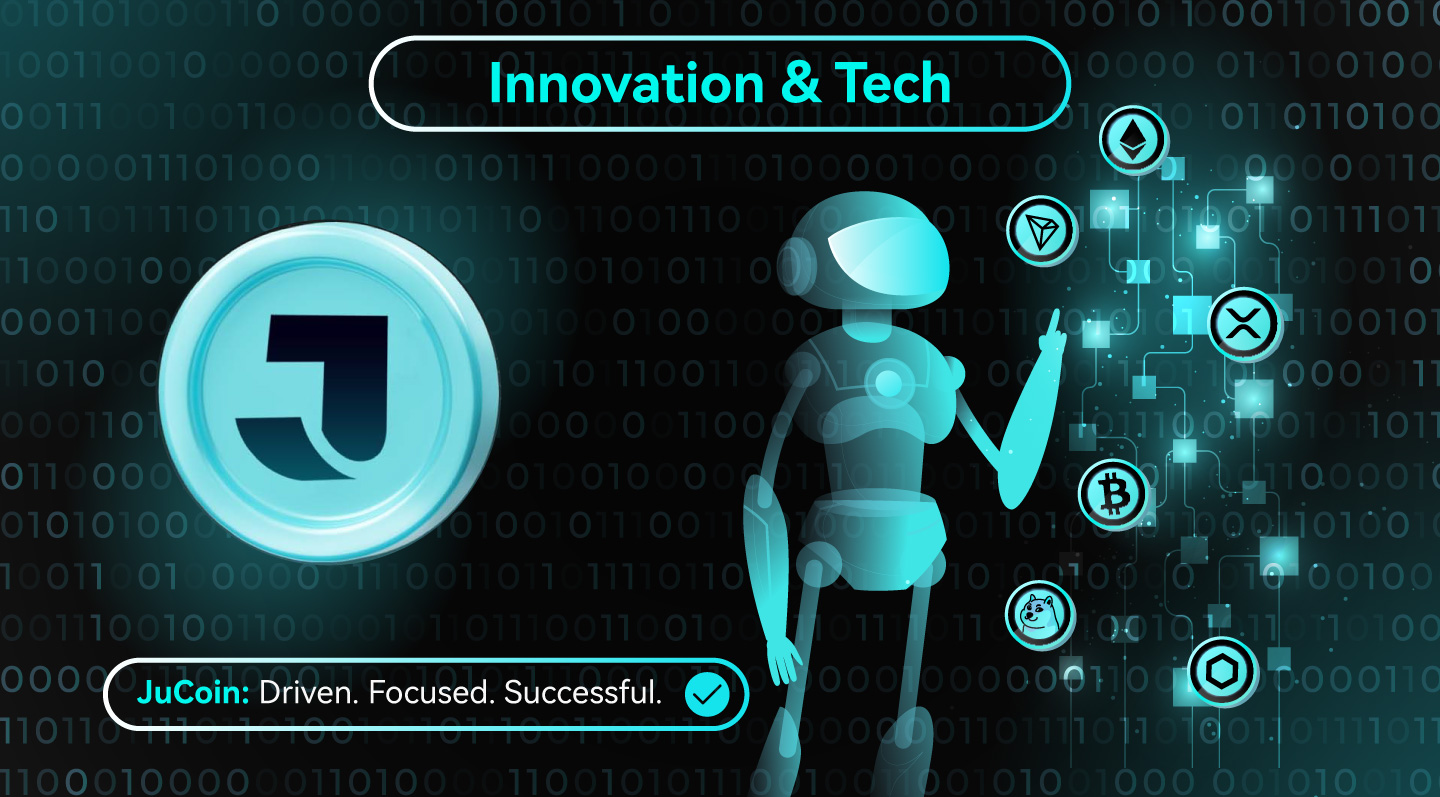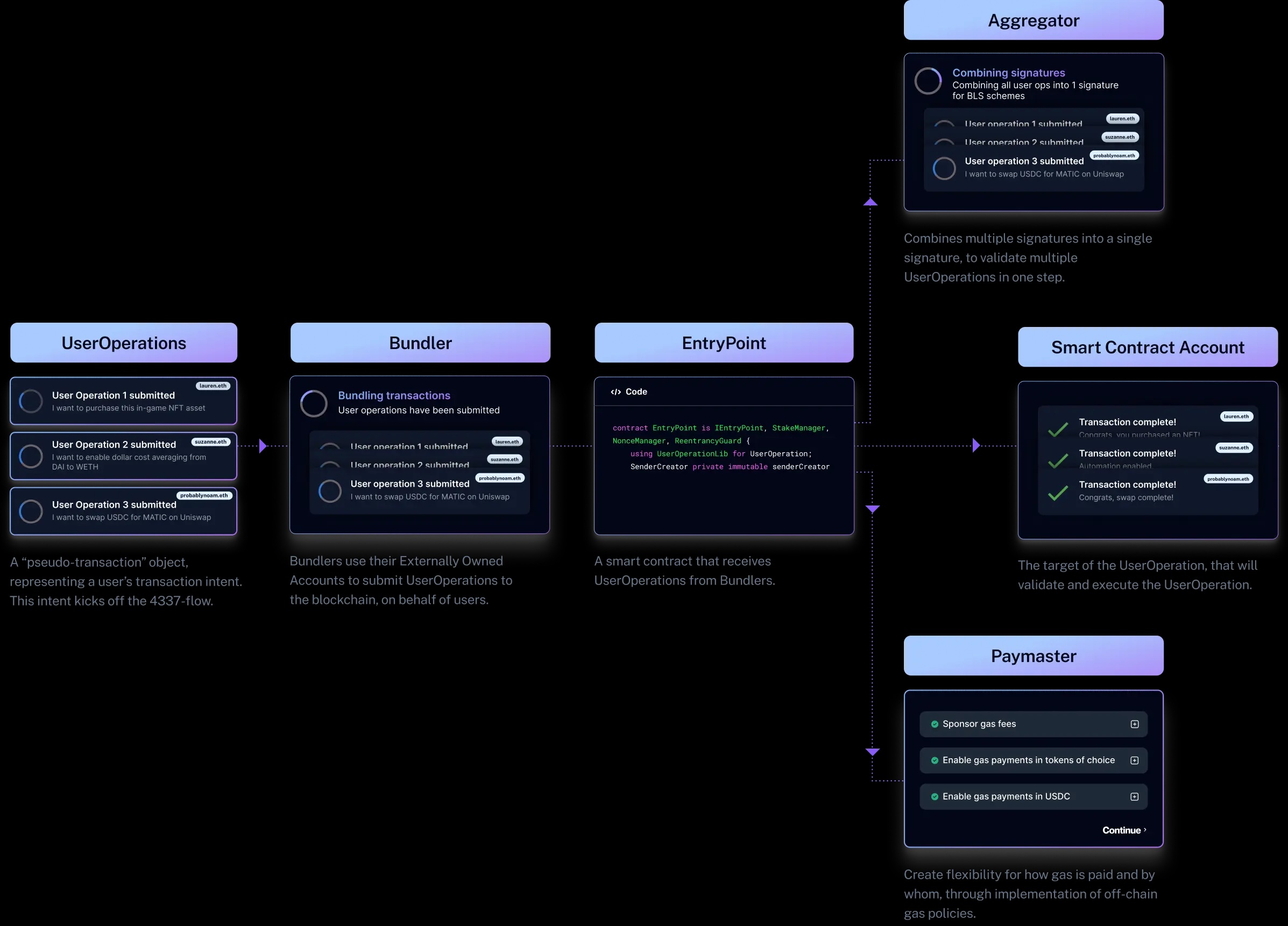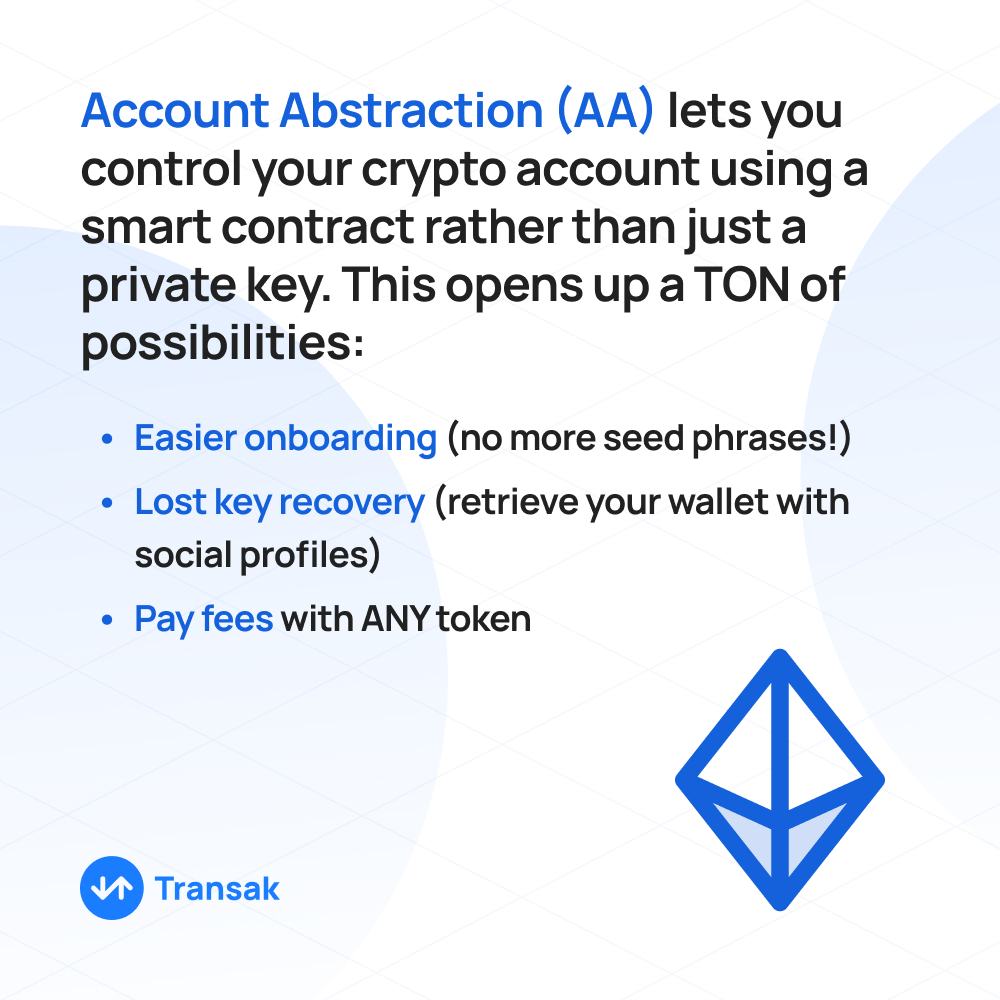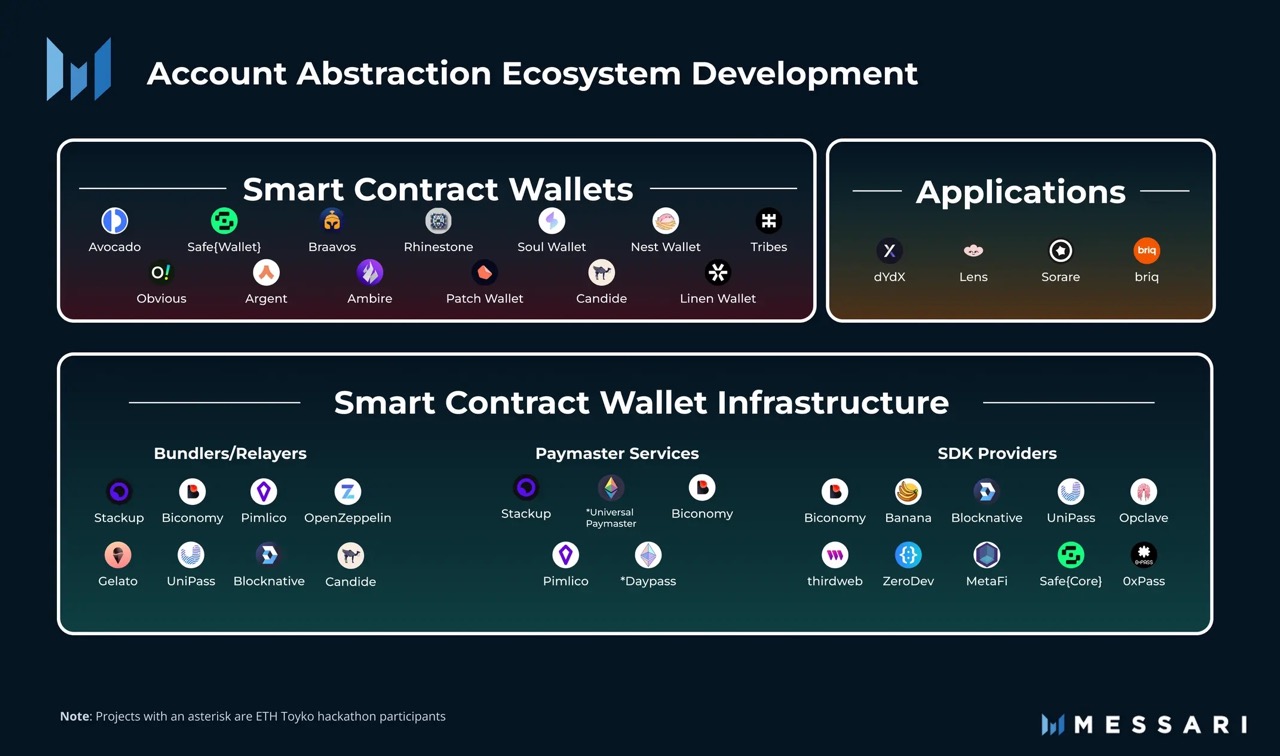
Key Takeaways
- Account Abstraction transforms the traditional Ethereum account model by enabling smart contract-based wallets to function as first-class citizens, decoupling user identity and wallet logic from fixed protocol constraints.
- Through the ERC-4337 standard, Account Abstraction introduces user operations, bundlers, and paymasters that collectively allow for features such as gasless transactions, session keys, and social recovery.
- The architecture enables a new generation of programmable wallets that support dynamic authentication, multisig coordination, custom fee payments, and on-chain automation, improving usability and security.
- Ecosystem participants, including Safe (formerly Gnosis Safe), Biconomy, Candide, and StackUp, are driving adoption by integrating AA features into wallet infrastructure, onboarding flows, and embedded dApps.
- As modular rollups and L2s adopt native Account Abstraction, the model is poised to redefine how users interact with decentralized applications, making Web3 onboarding as seamless and intuitive as Web2 platforms.
Ethereum’s account model was originally designed with simplicity and protocol-level determinism in mind. It consists of two types of accounts: externally owned accounts (EOAs), controlled by private keys, and smart contract accounts, governed by code. This distinction, while effective for early-stage infrastructure, has created friction for broader adoption. EOAs are limited in functionality; they cannot verify logic on their own, automate tasks, or upgrade their behavior. Meanwhile, smart contract accounts offer programmability but are not natively usable as wallets without additional infrastructure.
Account Abstraction (AA) addresses this structural asymmetry. It reimagines how user accounts function by elevating smart contract accounts to full protocol-level actors. In this model, wallets become programmable agents capable of handling complex logic, security preferences, and alternative fee structures, all while maintaining compatibility with Ethereum’s decentralized execution environment.
The goal of Account Abstraction is to remove the rigid dichotomy between EOAs and smart contracts, allowing all accounts to operate under a unified, flexible standard. This Innovatoin and Tech article explores how Account Abstraction works, the technical framework introduced by ERC-4337, and the emerging ecosystem that is building toward a more seamless and secure user experience in Web3.
What Is Account Abstraction?
Account Abstraction is a design paradigm that enables wallets to operate as smart contracts, giving them the ability to define their own verification logic, gas payment mechanisms, and authorization models. Rather than enforcing a fixed signature and nonce model at the protocol level, Account Abstraction pushes these responsibilities to user-defined smart contract wallets.
At its core, Account Abstraction allows any Ethereum account to be programmable. This means that a wallet can incorporate features such as session keys for temporary access, social recovery mechanisms in the event of lost credentials, multi-factor authentication, and scheduled or conditional transactions. These capabilities, which are difficult or impossible with traditional EOAs, enable more intuitive and secure interactions with blockchain-based applications.
The concept of Account Abstraction has been proposed in various forms over the years, but it was ERC-4337, formally introduced in 2021 and deployed to the Ethereum mainnet in 2023, that provided a practical pathway for implementation without requiring changes to Ethereum’s consensus layer. This development has since catalyzed a wave of innovation in smart wallet infrastructure, user onboarding tools, and alternative transaction relayers.

Technical Architecture: How ERC-4337 Enables Account Abstraction
The ERC-4337 standard implements Account Abstraction by introducing a new layer between user wallets and Ethereum’s core protocol. Rather than modifying the base layer of the blockchain, it relies on a separate “pseudo-transaction pool” where UserOperations are submitted. These UserOperations are not standard transactions but data structures that include logic, signatures, and preferences.
A Bundler is an off-chain actor that collects multiple UserOperations from the mempool, bundles them into a single transaction, and submits it to a special on-chain contract called the EntryPoint. The EntryPoint verifies and executes the bundled operations, forwarding control to the user’s smart contract wallet, which implements a set of functions like validateUserOp and execute.
A Paymaster is another optional contract that can sponsor gas fees for users, allowing for gasless transactions. The paymaster verifies whether it wants to pay for the UserOperation and attaches the required value, offering new UX paradigms such as dApp-subsidized onboarding or gas payments in stablecoins or tokens.

Smart wallets themselves define their validation and execution logic, opening the door for highly customizable security models, transaction workflows, and application integrations. The result is an infrastructure layer that allows developers to tailor the wallet experience without compromising security or protocol compatibility.
Real-World Use Cases & Capabilities
Account Abstraction introduces a wide range of functionalities that improve both the user experience and the security posture of blockchain wallets. One of the most impactful features is social recovery, where a user can assign trusted contacts (guardians) to help regain control of their wallet in case of lost keys. This is implemented directly within the wallet’s logic and offers a meaningful alternative to the fragile seed phrase paradigm.

Another powerful use case is session keys, which allow temporary, restricted access to a wallet. For instance, a user interacting with a game or dApp could authorize a key that permits only in-game transactions for a limited time. This reduces the need for repetitive signature approvals while maintaining safety and minimizing friction.
Gas abstraction is also enabled through paymasters, allowing users to pay fees in tokens other than ETH or rely on dApps to cover gas entirely. This unlocks onboarding flows where new users can interact with a dApp without first acquiring ETH, thereby removing one of the major barriers to entry in Web3.
Multisig and programmable security are additional dimensions of AA-enabled wallets. Developers can define granular authorization rules. For example, requiring multiple signers for high-value transfers or enabling time-locked execution for sensitive operations. These controls can be adapted over time, offering both institutions and individuals a scalable security model that evolves with their needs.
Finally, AA makes on-chain automation feasible without third-party custodians. Users can schedule recurring payments, execute trades based on market conditions, or automatically migrate assets between yield protocols, all from within their smart contract wallet.
The Ecosystem Driving Account Abstraction

The Account Abstraction movement has seen strong momentum from both infrastructure providers and application developers. Safe (formerly Gnosis Safe) has long operated programmable smart contract wallets, and is now actively working to align its architecture with the AA model to support ERC-4337-style user operations.
Projects like Biconomy, StackUp, Candide, and ZeroDev are building toolkits and APIs that help developers implement AA-compatible wallets, bundler infrastructure, and paymaster logic. These services abstract the complexity of ERC-4337 and enable dApps to integrate AA features without managing backend infrastructure.
Wallets such as Rabby, Ambire, and newer iterations of MetaMask are experimenting with AA-native flows, including batched transactions, token-based gas, and dApp-specific authorizations.
Importantly, Layer 2 networks are also beginning to natively implement Account Abstraction. Optimism, zkSync, and Starknet have signaled support for AA primitives at the protocol level, which reduces reliance on off-chain bundlers and improves UX scalability. These developments suggest that AA is not merely an Ethereum Layer 1 enhancement but a foundational component of the broader rollup-centric future of Ethereum.
Recent Developments & Strategic Impact
In 2023 and 2024, AA adoption has accelerated due to improved bundler efficiency, the emergence of decentralized paymaster markets, and increased awareness from enterprise and retail developers. ERC-4337 deployments on mainnet and L2s have demonstrated that Account Abstraction can function without significant gas overhead or reliability concerns.
The concept of modular security layers is also gaining traction. In this model, wallets can dynamically adjust their security parameters based on risk context. For example, lowering thresholds for small transactions or raising them during periods of suspicious behavior. These adaptive security policies are only possible in a world where the wallet is a programmable, evolving agent.
From a strategic perspective, Account Abstraction represents a unifying layer between user intent, dApp logic, and on-chain execution. It reduces the need for external infrastructure like session relayers, simplifies key management, and allows for self-custody models that rival centralized apps in usability.
The Programmable Wallet Era
Account Abstraction marks a paradigm shift in how users interact with blockchain protocols. By replacing rigid, key-based accounts with flexible, programmable smart wallets, AA enables a new generation of applications that are secure, intuitive, and tailored to individual needs. From session keys and gasless transactions to social recovery and custom signing logic, AA transforms wallets from passive keyholders into active agents of user intent.
Its significance extends beyond Ethereum. As Layer 2s and appchains adopt AA natively, smart wallets will become the standard interface layer across Web3. Developers will no longer need to choose between security and usability. Institutions will be able to implement granular access controls. New users will onboard without seed phrases or ETH. And dApps will design interactions that mirror the convenience of Web2, without compromising the decentralization that defines Web3.
In that light, Account Abstraction is not just a wallet upgrade. It is infrastructure for human-centered, intelligent finance, an essential pillar of the next generation of decentralized applications.





